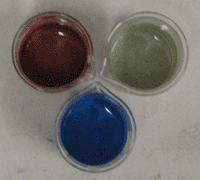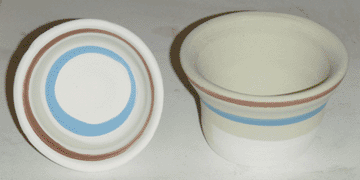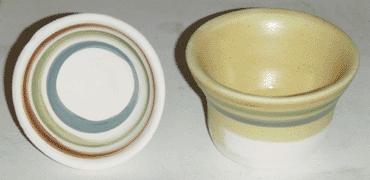


The previous glaze, while functional, is visually fairly plain; however if certain metals are added to the glaze mixture, they can impart their characteristic colors to the layer of glass during firing. This can be useful for adding markings or decorations to pottery, so I decided to use my glaze to make a set of colorful paints. I began with three 20-gram samples of dipping glaze, and stirred in half a gram (5% of the solid content of the glaze) of one of the following colorants to each sample:
Although any source of metal oxides could be used, I chose the above compounds due to the fact that their raw color (as painted) somewhat matches the color of the fired glaze. Despite containing no binder other than clay, the paints are surprisingly brushable and can be applied either directly to bisque-fired pottery, or over an existing layer of dry dipping glaze. In either case the paint melts well at ordinary firing temperatures (cone 06-04), and the results can be seen at the top of the page.